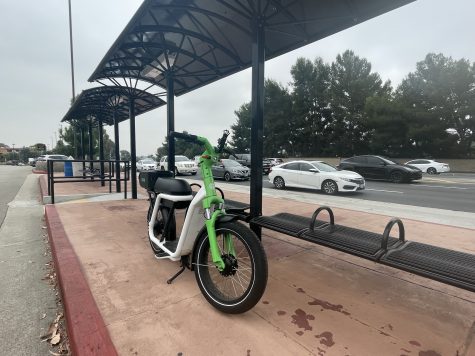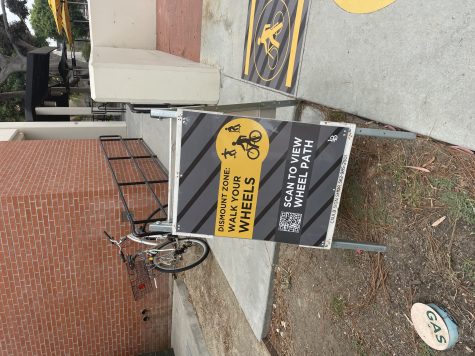Sustainable transportation is being used by students throughout campus. It gives CSULB students alternative and affordable forms of transportation to commute to the university.
The price of gas continues to rise in California, creating an issue for Long Beach State students that drove everywhere.
Janet Hardrow, CSULB political science major, has to commute to campus for three of her classes.
She decided to stay with her parents in Long Beach and ride an electric bike to school when she has to be on campus.

“I have saved a lot of money by doing this because it was harder and harder to keep up financially,” Hardrow said.
Hardrow has a studio apartment in downtown Los Angeles and pays $2,500 a month for rent.
The commute when she was driving added about $400 per week in gas due to traffic and construction detours throughout her route according to Hardrow.
Daniel Zuniga, CSULB history major, said that he was stressing out about how much it would cost him to commute and pay for gas.
“I had to really push it because I knew I wouldn’t be able to afford the weekly gas payments over a long period of time,” Zuniga said.
Since he bought the car outright from a dealer, he has quit one of his jobs as a waiter at a Denny’s restaurant.
The campus has moved toward a clean energy initiative for sustainable transportation options as well.
There are 343 vehicles in the campus fleet for staff and other campus workers, according to The Sustainability Tracking, Assessment and Rating System report for 2021. Approximately 212 of those vehicles are 100% electric with zero emissions produced, which is 30 more all electric vehicles than the pandemic year.
The school plans to complete an annual greenhouse gas emissions inventory report while making it publicly available for transparency according to its website.
The CSULB campus is known as a commuter campus due to the high volume of students that travel to campus for in person courses.
Bicycles are used by students throughout upper and lower campus.

For Frank Rocha, a CSULB sociology major, it is his main source of transportation.
“Biking was something I did all the time in high school and I saw no reason to stop using it,” Rocha said.
During the pandemic, Rocha said that he wanted to use it more because public transportation became unavailable or just not usable.
He said that he was concerned for his safety and health rather than taking a less tiresome form of transportation.
Holli Fajack, the sustainability coordinator, explained the idea behind the wheel paths on campus
“The paths were created to make it safer for students that ride bikes or scooters and for pedestrians that are walking,” Fajack said.
Even though the paths were made to make it safer for students, some expressed their feelings on how they are not being used properly.
Gabriella Cortez, kinesiology major, talked about her experience both using the wheel paths and walking throughout upper campus.
“I would ride my scooter and be in the wheel path and there would be a group of people walking in the path,” Cortez said.
She said that it became frustrating because there is more walking space outside of the wheel path for pedestrians than in the wheel path.
“When I don’t ride my scooter and I walk, people on bikes will come inches away from running into me because they are not in the wheel path,” Cortez said.

President Jane Close Conoley emailed students a survey on Monday, asking them how they traveled to campus between Oct. 31-Nov. 4.
“Collecting this travel-related data allows the campus to complete its annual greenhouse gas emissions inventory, which is a requirement of the Climate Leadership Commitment,” Conoley wrote.




